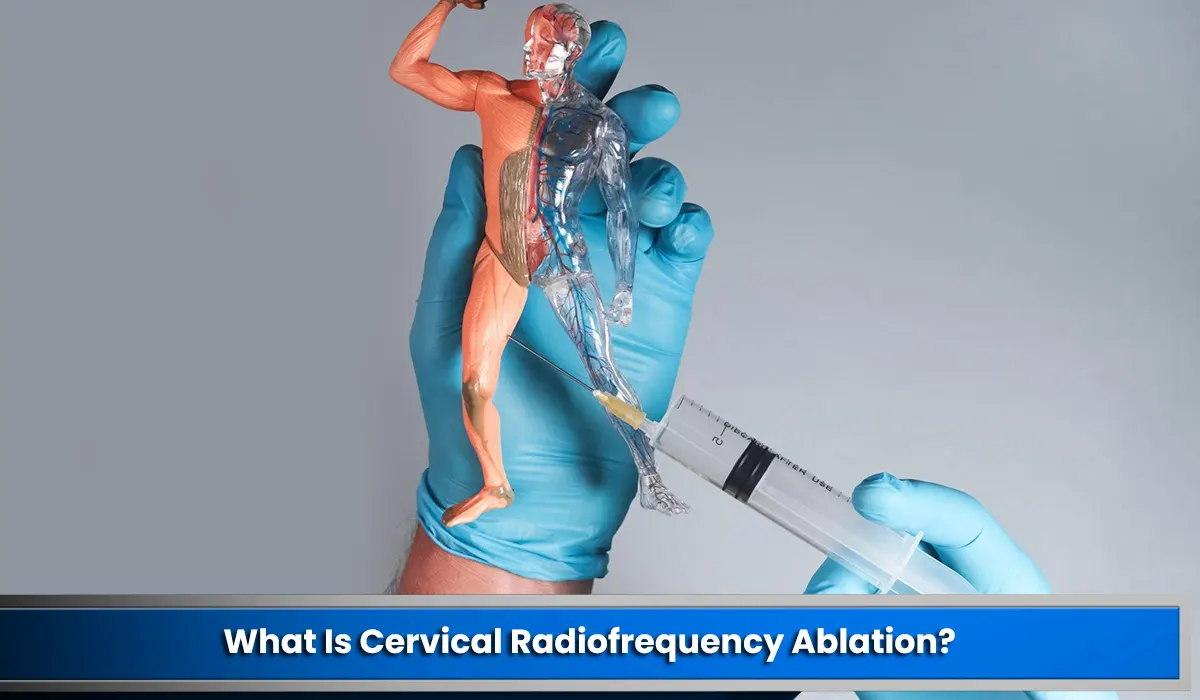Radiofrequency Ablation Vs Steroid Injection: Which One Would Be Better for You?

More than 20% of adults in the United States suffer from chronic pain. You are not alone if you are suffering from back pain, headaches, or other types of pain.
Fortunately, treatments for persistent pain are improving. Radiofrequency ablation and steroid injection are two of the most well-known treatments.
Explore each of these options as you consider how to treat your chronic pain. Continue reading to discover more about each of them and determine which one is best for you.
What Is Radiofrequency Ablation?
Radiofrequency ablation, also known as radiofrequency neurotomy, is a treatment that involves heating up injured nerve tissue with radio waves. The heat kills the nerves in the targeted location, preventing pain signals from reaching your brain.
This procedure is frequently used by doctors to relieve chronic pain, particularly in the low back, neck, and joints. However, the treatment can also aid in improving musculoskeletal function and lowering the amount of pain medication required by the patient. For certain patients, the technique may allow them to postpone or avoid surgery.
Radiofrequency ablation can treat a wide range of disorders, including:
- Chronic pain, including masteron benefits arthritis-related discomfort
- Cancer agony
- Pain in the face, such as that caused by trigeminal neuralgia
- Pain in the peripheral nerves
- Problems with heart rhythm, including arrhythmias
- Tumors
A physician will put a small, hollow needle into the nerve they intend to target during the treatment. Then, radio waves begin to flow from an electrode at the needle’s tip. The waves pass through the needle and into the nerves that are being treated.
Because the treatment is exact, no nearby nerves will be injured.
What Is Cervical Radiofrequency Ablation?

Cervical radiofrequency ablation is a type of radiofrequency ablation that is commonly used to treat neck, shoulder, and upper back pain. Some doctors may refer to the technique as cervical facet thermal coagulation or rhizotomy.
Cervical radiofrequency ablation, like classic radiofrequency ablation, employs radio waves to heat and damage nerve cells. The only distinction you may see is the location.
The cervical surgery targets areas ranging from the head to the shoulder blades. The precise target will be determined by the location of your pain.
Who Is a Candidate for Radiofrequency Ablation?
A frequent procedure is radiofrequency ablation. You may be eligible if you have any of the following:
- Chronic pain that has not responded to other treatment options, such as pain medication and physical therapy
- Nerve block injections provide pain relief since they indicate that your pain is nerve-related.
This surgery should not be performed if you are pregnant, have an infection, or have a bleeding issue.
Make an appointment with your doctor if you’re interested in radiofrequency ablation treatment. They can assist you in determining which type of treatment is best for you.
However, they will almost certainly have to send you to a physician who has the requisite training to do the treatment. If you’re curious about your alternatives, look up “radiofrequency ablation doctors near me.”
What Happens Oxandrolone(Anavar) During Radiofrequency Ablation?

Before having the operation performed, you should consult with your healthcare professional about any special instructions you may need to follow. You may need to stop taking some drugs, for example, a few days before the surgery.
Your provider may also order imaging of your impacted areas to better understand your current status. This will allow them to deliver a more exact procedure later on.
In addition, your provider will run a diagnostic block test. This will confirm the source of your pain and the severity of the pain. It will also assist the clinician in determining whether a radiofrequency ablation might be beneficial for you.
If the operation is performed on you, you will begin by resting on your stomach on an x-ray table. During the surgery, your healthcare professional will use specific monitors to monitor your condition.
During the process, you will be awake so that you can talk with the provider. If you’re worried about being awake, you can ask for medicine to help you relax. You’ll also be given a topical anesthetic around the area where the needle will be inserted.
The physician will insert the needle and use fluoroscopy to determine whether the needle is in the correct position. The local anesthetic is then administered, followed by radio waves that heat the nerves.
Depending on your needs, the treatment can run anywhere from 15 minutes to two hours.
You should have someone else drive you home after the treatment. You should avoid doing anything difficult for the next 24 hours. You should be able to resume normal activities within 24-48 hours.
You may notice some soreness or pain at the injection site. You can treat this with pain medicine or an ice pack. Physical treatment may also be recommended by your doctor.
How Much Does Radiofrequency Ablation Cost?
Radiofrequency ablation operations can range in price from $2,000 to $5,000, depending on where you get your therapy.
If you have health insurance, find out if your policy will cover some or all of the treatment.
What Is a Steroid Injection?
Epidural corticosteroid injections enable doctors to quickly deliver pain medication to the body. A needle will be inserted into the epidural area by a physician during the process. This is a fatty region of the body that protects the spinal cord.
These shots are frequently given to patients in order to provide immediate pain relief from irritated spinal nerves. Corticosteroid injections may be used to treat the following conditions:
- Herniated disks
- Joint cysts
- Bone spurs
- Slipped vertebrae
- Thickening spinal ligaments
The drug administered to the patient lowers inflammation and opens the nerve route in the spine.
What Happens During aviatorworld.guru a Steroid Injection?
In most circumstances, an epidural steroid injection is performed as an outpatient surgery. To make the injection easier, you’ll probably change into a hospital gown before getting the shot.
You will also be given a local anesthetic or a moderate sedative to help you relax during the treatment.
If you have a prior ailment, you should consult your doctor. You may need to change your prescription schedule or seek other treatment.
When you’re ready, your healthcare practitioner will utilize an x-ray machine to help guide the needle as they inject the drug. They want to make sure the needle is in the correct place before administering the drug.
To determine the location, they may inject contrast dye into the area.
The steroid drug will be injected once the physician has determined the proper location. To alleviate discomfort, they frequently inject pain relievers or anesthetics.
You are free to go after the treatment. You may need to take the procedure day off. However, you should be able to resume your normal everyday activities the next day.
You should notice the drug working within one to three days. However, it can take up to a week for some individuals to feel better.
If you don’t feel better within a week of the surgery, you should consult with your doctor. This could indicate that the discomfort is originating from somewhere else.
Radiofrequency Ablation vs Steroid Injection: Which One’s Better for You?
If you’re suffering from persistent pain, it’s time to choose between radiofrequency ablation and steroid injection.
Steroid injections provide temporary relief but do not guarantee long-term results. Radiofrequency ablation, on the other hand, may take the same amount of time to do but can last for months at a time. This method also covers more ground than typical injections.
Steroid injections are most typically used to treat arthritic joint pain, while radiofrequency ablation is used to treat nerve pain in the spine and/or neck. This, however, is not the only technique to manage pain.
Seeing a professional is the best method to evaluate which treatment is best for you. An expert healthcare provider can assist you in determining the best treatment for you.
They will consider a variety of criteria, including your symptoms, the location of your pain, your pain level, your quality of life, and your reactions to previous therapies. They may also perform imaging studies on the areas in question.
With all of these considerations in mind, an expert may assist you in making the best decision for your chronic pain. They will discuss your expectations for the operation with you and assist you in selecting the appropriate method for you. They can also assist you in developing a long-term treatment plan beyond the initial operation you both chose.
